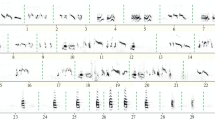Abstract
The intraspecific behavior of the non-singing cricket Phaeophilacris bredoides Kaltenbach, 1986, which has no tympanal system, stridulatory apparatus, and classical acoustic communication, was studied. Even though this cricket has no song, its intraspecific behavior can be differentiated into reproductive and agonistic (defensive and aggressive), as this was done before for singing crickets. The main elements and the sequence of the phases were described for reproductive behavior. The active role during copulation belongs to the male. Wingflicks and rocking movements of the male can function as a “song.” Wing-flicks apparently generate air movements that function as short-range signals during reproductive and aggressive behavior. Substrate-borne vibrations produced by rocking also seem to be associated with aggressive behavior. Antennal contacts form an important part of interaction between crickets of both sexes. Thus, intraspecific signaling is at least partly mediated by mechanosensory channels. The assumption about the possible direction of evolution in the singing and non-singing groups of crickets was made.
Similar content being viewed by others
References
Autrum, H., “Über Gehor und Erschutterungsinn bei Locustiden,” Zeitschrift für Vergleichende Physiologie 28, 580–673 (1941).
Autrum, H. and Schneider, W., “Untersuchungen über den Erschutterungsinn der Insekten,” Zeitschrift für Vergleichende Physiologie 31, 77–88 (1948).
Čokl, A., Kalmring, K., and Rössler, W., “Physiology of Atympanate Tibial Organs in Forelegs and Midlegs of the Cave-Living Ensifera, Troglophilus neglectus (Rhaphidophoridae, Gryllacridoidea),” Journal of Experimental Zoology 273, 376–388 (1995).
Dambach, M., “Der Vibrationssinn der Grillen. I. Schwellenmessungen an Beinen frei beweglicher Tiere,” Journal of Comparative Physiology 79A, 281–304 (1972).
Dohlen, P. von, Untersuchungen zum Vibrationssinn der Feldgrille: Doct. Diss. (Mathematisch-Naturwiss. Fakultät, Univ. Köln, 1981).
Field, L.H. and Bailey, W.J., “Sound Production in Primitive Orthoptera from Western Australia: Sounds Used in Defense and Social Communication in Ametrus sp. and Hadrogryllacris sp. (Gryllacrididae: Orthoptera),” Journal of Natural History 31, 1127–1141 (1997).
Gorochov, A.V., The System and Evolution of the Suborder Ensifera (Orthoptera): in Two Parts (Zool. Inst., St. Petersburg, 1995) [in Russian].
Heidelbach, J. and Dambach, M., “Processing Wing Flick-Generated Air-Vortex Signals in the African Cave Cricket Phaeophilacris spectrum,” Naturwissenschaften 78, 277–278 (1991).
Heidelbach, J. and Dambach, M., “Wing-Flick Signals in the Courtship of the African Cave Cricket, Phaeophilacris spectrum,” Ethology 103, 827–843 (1997).
Ivanov, V.P., Sensory Organs of Insects and Other Arthropods (Nauka, Moscow, 2000) [in Russian].
Keuper, A., Otto, C.W., and Schatral, A., “Airborne Sound and Vibration Signals in Bush Crickets and Locusts. Their Importance for the Behavior in the Biotope,” in Acoustic and Vibrational Communication in Insects (Paul Parey, Berlin, 1985).
Knyazev, A.N., Candidate’s Dissertation in Biology (Leningrad, 1978).
Knyazev, A.N., Graduate Thesis, Faculty of Biology and Soil Science, Leningrad State University (Leningrad, 1972).
Knyazev, A.N., “Development Cycle of the Cricket Gryllus bimaculatus Deg. (Orthoptera, Gryllidae) during Laboratory Rearing,” Entomologicheskoe Obozrenie 64 (1), 58–73 (1985).
Lunichkin, A.M., Zhemchuzhnikov, M.K., and Knyazev, A.N., “Ontogeny of the Cricket Phaeophilacris bredoides Kaltenbach (Orthoptera, Gryllidae),” Entomologicheskoe Obozrenie 91 (3), 506–519 (2012) [Entomological Review 93 (1), 19–29 (2013)].
Stritih, N. and Cokl, A., “Mating Behavior and Vibratory Signaling in Non-Hearing Cave Crickets Reflect Primitive Communication of Ensifera,” PLoS ONE 7 (10): e47646 (2012). doi:10.1371/journalpone. 0047646.
Weissman, D.B., “Communication and Reproductive Behavior in North American Jerusalem Crickets (Stenopelmatus) (Orthoptera: Stenopelmatidae),” in The Biology of Wetas, King Crickets and Their Allies (CABI Publishing, New York, 2001), pp. 351–375.
Zhantiev, R.D., Insect Bioacoustics (Moscow State Univ., Moscow, 1981) [in Russian].
Author information
Authors and Affiliations
Corresponding author
Additional information
Original Russian Text © A.M. Lunichkin, M.K. Zhemchuzhnikov, A.N. Knyazev, 2013, published in Entomologicheskoe Obozrenie, 2013, Vol. 92, No. 4, pp. 673–683.
Rights and permissions
About this article
Cite this article
Lunichkin, A.M., Zhemchuzhnikov, M.K. & Knyazev, A.N. Basic elements of behavior of the cricket Phaeophilacris bredoides Kaltenbach (Orthoptera, Gryllidae). Entmol. Rev. 96, 537–544 (2016). https://doi.org/10.1134/S0013873816050031
Received:
Published:
Issue Date:
DOI: https://doi.org/10.1134/S0013873816050031




